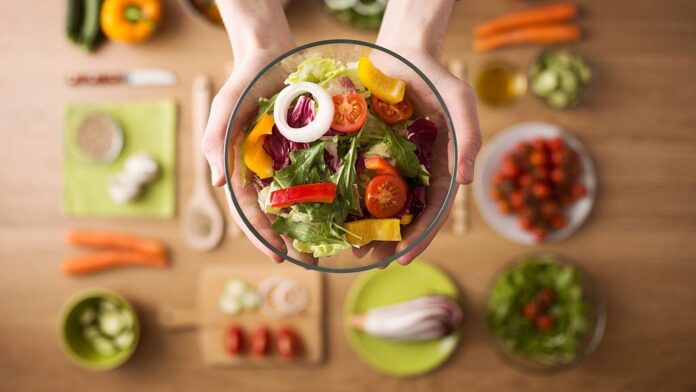
Introduction:
In a world where fast food and processed snacks are readily available and often preferred for their convenience, the importance of a diet rich in fruits and vegetables cannot be overstated. These natural, nutrient-packed foods provide us with a wide array of vitamins, minerals, fiber, and antioxidants that are essential for our overall health. However, despite being aware of their benefits, many people struggle to incorporate more fruits and vegetables into their daily diets.
This comprehensive guide is designed to help you make fruits and vegetables a central part of your diet. We will explore the numerous health benefits they offer, share practical tips for purchasing, storing, and preparing them, and offer delicious recipes to inspire you. By the end of this guide, you’ll have the knowledge and motivation to embrace a healthier, more plant-based lifestyle.
Chapter 1: Why Fruits and Vegetables Matter
Before we delve into the practical aspects of incorporating more fruits and vegetables into your diet, it’s essential to understand why they are so vital for your health. In this chapter, we’ll explore the numerous health benefits of these natural foods, including:
- Nutrient-rich Powerhouses: Fruits and vegetables are packed with essential vitamins, minerals, and antioxidants that support your overall well-being.
- Weight Management: How these foods can help you maintain a healthy weight.
- Digestive Health: The role of fiber in promoting a healthy digestive system.
- Disease Prevention: How a diet rich in fruits and vegetables can reduce the risk of chronic diseases like heart disease, cancer, and diabetes.
- Mental Well-being: The impact of diet on mental health and cognitive function.
Chapter 2: Setting Realistic Goals
Before making any significant dietary changes, it’s crucial to set achievable goals. This chapter will guide you through:
- Assessing Your Current Diet: Understanding your current eating habits is the first step towards setting realistic goals.
- Defining Your Objectives: Whether you aim to eat more vegetables, increase fruit intake, or achieve a specific health goal, we’ll help you set clear objectives.
- Gradual Transition: We’ll discuss the benefits of a gradual transition towards a more plant-based diet and offer practical tips to make the process smoother.
- Accountability and Support: The importance of having a support system and tracking your progress.
Chapter 3: Shopping for Success
Knowing how to select the freshest and highest-quality fruits and vegetables is essential. In this chapter, we’ll cover:
- Seasonal Shopping: The benefits of buying in-season produce and how to identify what’s in season.
- Farmers’ Markets vs. Grocery Stores: A comparison of shopping options and tips for navigating both effectively.
- Reading Labels: Understanding food labels and making informed choices.
- Buying in Bulk: How to save money by purchasing fruits and vegetables in bulk.
- Organic vs. Conventional: Exploring the organic vs. conventional debate and making choices that suit your preferences and budget.
Chapter 4: Storage and Preservation
Proper storage and preservation techniques are vital to reducing food waste and ensuring your fruits and vegetables stay fresh. In this chapter, we’ll discuss:
- Refrigeration Tips: How to store different fruits and vegetables in your refrigerator for maximum freshness.
- Freezing Fruits and Vegetables: The art of freezing produce to extend their shelf life.
- Canning and Pickling: Techniques to preserve fruits and vegetables for long-term use.
- Reducing Food Waste: Practical strategies to minimize food waste.
Chapter 5: Creative Cooking and Preparation
The way you prepare and cook your fruits and vegetables can greatly impact their taste and appeal. This chapter explores:
- Flavorful Cooking Techniques: Exploring various cooking methods like roasting, grilling, steaming, and more to enhance the taste of your produce.
- Spice it Up: The art of seasoning and spicing to create delicious vegetable dishes.
- Fun with Fruits: Creative ways to incorporate fruits into your meals and snacks.
- Cooking with Kids: Tips for getting children excited about fruits and vegetables.
- Meal Planning: How to incorporate these foods into your daily meals and snacks.
Chapter 6: Delicious Recipes
To provide you with practical examples of how to incorporate more fruits and vegetables into your diet, we’ve included a collection of delicious, easy-to-follow recipes. These recipes will cover a range of dishes, from breakfast to dinner and snacks. Some examples include:
- Green Smoothie Bowl
- Rainbow Salad with Homemade Dressing
- Roasted Veggie Wraps
- Stuffed Bell Peppers
- Berry Parfait
- Veggie Stir-Fry
- Fruit Salsa with Cinnamon Chips
Chapter 7: Overcoming Challenges
Inevitably, you will face challenges along your journey to incorporating more fruits and vegetables into your diet. In this chapter, we’ll address common obstacles and provide solutions to:
- Dealing with Picky Eaters: Strategies for getting even the pickiest of eaters to enjoy their fruits and vegetables.
- Time Constraints: Tips for preparing healthy meals, even on your busiest days.
- Budget Concerns: Maximizing the value of your grocery budget while buying fresh produce.
- Dining Out: How to make smart choices when eating at restaurants.
- Sustainability and Eco-Friendly Choices: Incorporating environmental considerations into your dietary choices.
Chapter 8: Maintenance and Sustainability
Your journey doesn’t end with successfully incorporating more fruits and vegetables into your diet. This chapter discusses:
- Long-Term Commitment: Maintaining your healthy eating habits and making them a part of your lifestyle.
- Setting an Example: Encouraging family and friends to join you on your journey.
- Exploring Local and Global Cuisine: Expanding your palate and embracing diverse culinary traditions.
- Connecting with Food Communities: Getting involved with local food initiatives and supporting sustainable agriculture.
Conclusion: A Healthier, Happier You
In conclusion, this guide has equipped you with the knowledge, tips, and inspiration to make fruits and vegetables a central part of your daily diet. By incorporating these natural, nutrient-packed foods into your meals, you’re not only taking a step towards better health but also contributing to a more sustainable and eco-friendly future. Embrace the delicious world of fruits and vegetables and enjoy the countless benefits they bring to your life.
Remember, it’s not about perfection, but progress. Your journey to a more plant-based diet is a personal one, and every step counts. So, take it one delicious, nutritious bite at a time, and savor the improved health and well-being that comes with it.












































